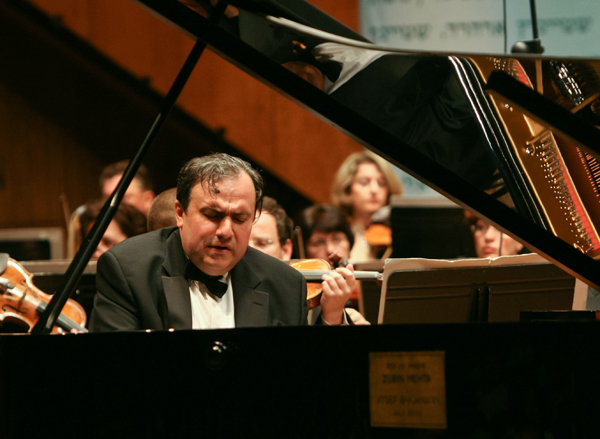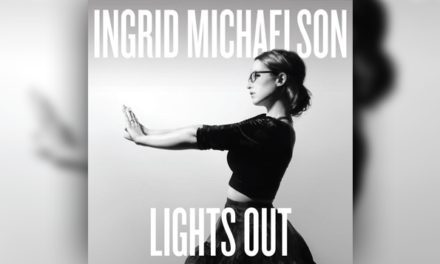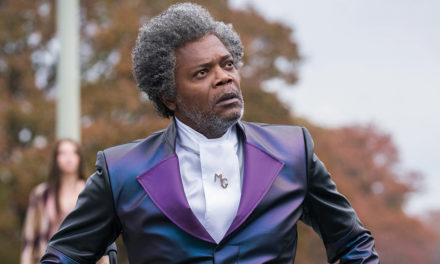Internationally acclaimed and Grammy award winning pianist Yefim Bronfman took center stage in Emerson Concert Hall of the Donna and Marvin Schwartz Center for Performing Arts last Saturday night, as part of this season’s Flora Glenn Candler Concert Series.
Celebrating its ten year anniversary, the Schwartz center was vibrant with avid concert-goers that night, which included Marvin and Donna Schwartz. After an introduction from President Wagner, the crowd settled down and grew eager as the lights dimmed.
Yefim Bronfman walked onto stage with poise and a sense of confidence. He began the night with “Arabeske in C major, op. 18” by Robert Schumann. The piece had a light and airy feeling, and was played with meticulous and distinct attention to detail.
The piece began to swell and grow, but soon returned to its previous sense of weightlessness, causing audience members throughout the hall to close their eyes and sway with the music. The piece ended with a graceful arpeggio towards the lower register of the piano and the entire audience sat with bated breath as the last noted faded away.
The next piece, Brahms’ “Third Piano Sonata in F Minor, op. 5,” began with a majestic string of leaping octaves and fiery chords.
Later, the theme could be heard throughout the movement transposed from key to key, creating a variety of sublime colors. As the music softened, I found myself slowly drifting away when an unexpected chord suddenly burst from the piano and brought me back to consciousness.
A recurring dotted motive was played throughout the movement, but Bronfman knew how to treat the notes perfectly in each different context. His impeccable ability to create drastic contrasts in his dynamics was breathtaking. The first movement ended with a sequence of colorful chords and his hands slowly drifted back down after a splendid arm toss.
The next movement, Andante espressivo – Andante molto, was beautifully delicate, especially coming from such a hefty guy. Despite the soft volume of the music, he projected the notes he wanted the audience to hear very clearly, and the beautiful melody accompanied by its rich Brahmsian harmonies filled the hall. Despite the profound echoes of the hall, Bronfman always managed to project the melody but subdue the rest of the sounds just enough to produce the desired effect. Again the movement ended with a lovely arpeggio, but this time towards the upper register of the keyboard.
An energetic slur of banging chords erupted to begin the third movement. The energy was inherent within the notes themselves. As the scherzo grew soft, many audience members began nodding off, but were tauntingly re-aroused numerous times by the playful nature of the piece.
The fourth movement, an intermezzo, began with little pause after the previous movement. The recurring ominous syncopation in the left hand helped to keep the audience in suspense. The piece came to a close with a peaceful B-flat major chord in the lower register. With a slight push off the keyboard, he sat back upright, preparing for the finale.
As the finale began, I noticed Bronfman’s deliberate tendency to violently nod his head with each powerful note or chord, causing his cheeks to bounce viciously across his face. The piece finally came to a close with a series of glorious arpeggiated chords, settling resoundingly on the tonic.
His clarity and evenness of the softest passages throughout the whole piece was most impressive. Bronfman, with his experienced years, projected a deep sense of emotional and musical maturity in conjunction with the technical flurries, in contrast to the showy technical displays by many artists of the younger generation. Bronfman has his own unique style, and knows how to achieve the sound he wants to create.
After the intermission, Bronfman returned to the stage to play “Sisar,” a new work by Esa-Pekka Salonen. Although he was focused intensely on looking at the music, the musical interpretation and individuality was still evident. There was not a common theme to follow, as in the previous romantic pieces, but the piece consisted of lovely flowing notes, powerful accents and chords and grand contrasts. I noticed that his wrists and fingers were always very relaxed, and the only part of the body that seemed to be working very hard was his head, which he continued to nod violently on accents. The piece left me with an elegant floating sensation.
His next piece, Prokofiev’s “Eighth Sonata” began with soft but firmly played phrases. His fingers sunk deep into the keys to help project his tone, creating an elegant fluidity to his phrasings and powerful harmonies, which all served to help unite the abstract nature of the piece. He focused on creating the sound he wanted, creating stark contrasts in color. The evenness and clarity of the lighter passages, played in conjunction with a grumbly bass, were incredibly well controlled. The whole piece was very Russian, played with a definitive Prokofiev sound. Powerful yet elegant, Bronfman played with impeccable control, and no matter how soft the music became, we could still hear every note project throughout the hall.
During the Andante Sognando, all I wanted to do was close my eyes and enjoy the music. The dissonance of the harmonies was the most beautiful aspect, in addition to his sensitive touch. Again, the evenness and clarity throughout the night was absolutely mental.
A grandiose display of technical fireworks, the “Vivace” finale seemed so simple beneath Bronfman’s fingers. His runs were exquisitely smooth, almost like glissandos, where not every note was prominently articulated. The purpose of the runs was to create more of an effect in the context of the piece, and boy did he do those effects justice.
As the piece neared the end, I watched as flames blazed while he thunderously struck each chord, but still beautifully brought out the melody amongst the myriad of notes. The crowd was on its feet before the piano had stopped shaking from the power of his last blow.
He returned for two encores, the first of which he stated: “I would like to play something easy,” eliciting a few chuckles from the crowd. He played Chopin’s etude “op. 10 no. 8,” also known as “Sunshine,” hardly something easy, but a cute and cheerful piece, bringing the crowd to its feet once again. The second encore, another Chopin etude, “op. 10 no. 12,” nicknamed the “Revolutionary” etude, was played with exceptional contrasting dynamics and colors all across the spectrum.
I had the chance to meet him backstage after the concert, and despite his gruff appearance, he was quite charming and even gracious enough to sign my music and have a picture taken. To have had the privilege to witness an artist of his caliber perform at our school was truly a blessing, and is a kind of experience that will continue to inspire for generations.
– By Hao Feng
hao.feng@emory.edu
The Emory Wheel was founded in 1919 and is currently the only independent, student-run newspaper of Emory University. The Wheel publishes weekly on Wednesdays during the academic year, except during University holidays and scheduled publication intermissions.
The Wheel is financially and editorially independent from the University. All of its content is generated by the Wheel’s more than 100 student staff members and contributing writers, and its printing costs are covered by profits from self-generated advertising sales.





